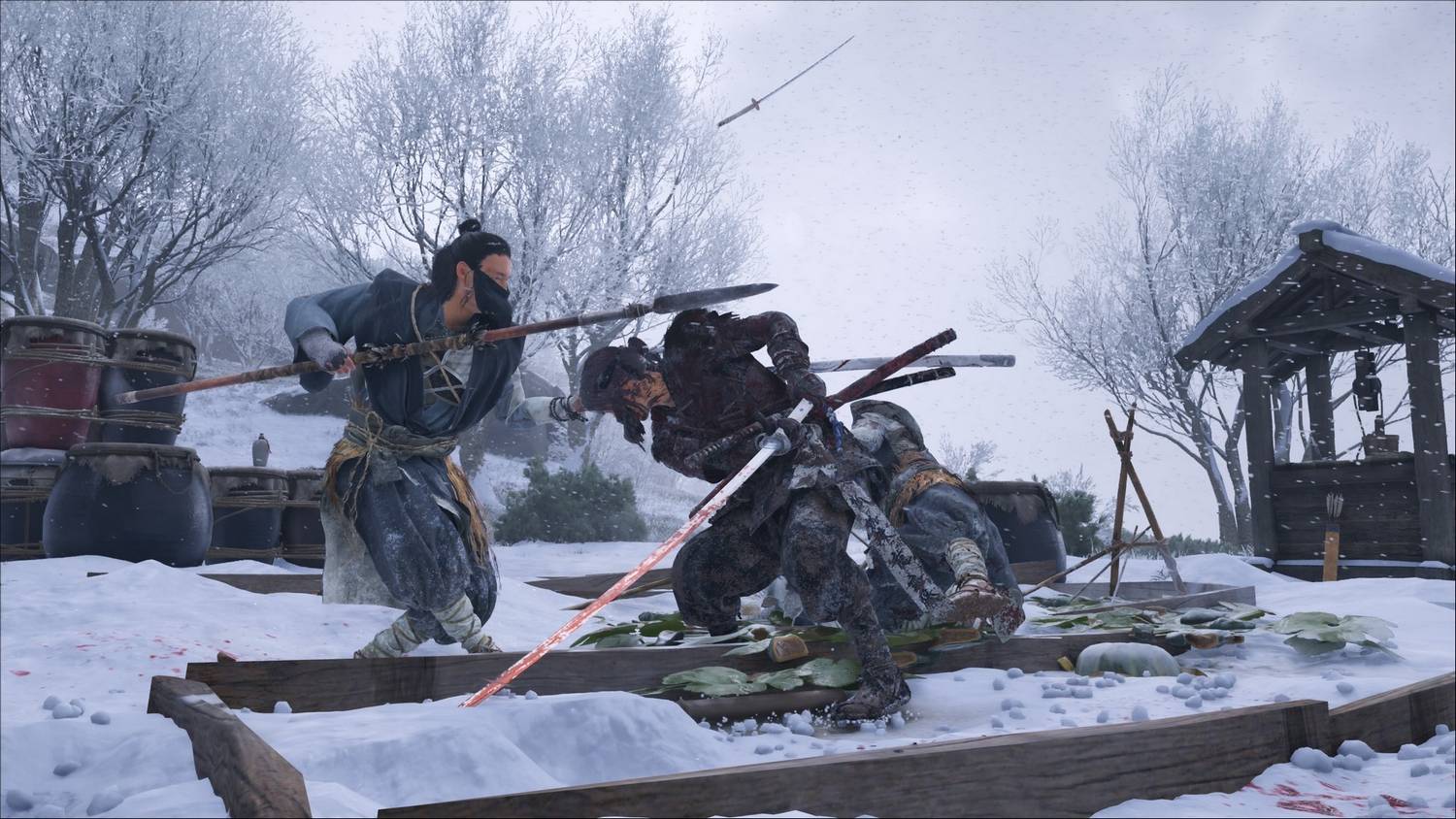Unparalleled Open-World Design: Why Ghost of Yōtei’s Exploration Stands Above the Rest
Popular Now
 The Legend of Zelda
The Legend of Zelda
 Call of Duty
Call of Duty
 Among Us
Among Us
 PUBG Mobile
PUBG Mobile
 Toca Boca World
Toca Boca World
 R.E.P.O
R.E.P.O
 Free Fire Max
Free Fire Max
 Valorant
Valorant
 Gacha Club
Gacha Club
 Sonic the Hedgehog™ Classic
Sonic the Hedgehog™ Classic
 In a gaming landscape saturated with expansive, checklist-heavy virtual worlds, Sucker Punch Productions’ latest masterpiece, Ghost of Yōtei, has redefined what open-world exploration means. Launched recently to critical acclaim on the PlayStation 5, this standalone sequel to the beloved Ghost of Tsushima has captivated players, myself included, to an extent I haven’t experienced in any other title—not just this year, but arguably ever. The joy of wandering the 17th-century Japanese island of Ezo (modern-day Hokkaido) is a masterclass in organic design, seamlessly blending cinematic beauty with genuine, unforced player discovery, making the act of simply moving through the environment the most rewarding gaming experience available.
In a gaming landscape saturated with expansive, checklist-heavy virtual worlds, Sucker Punch Productions’ latest masterpiece, Ghost of Yōtei, has redefined what open-world exploration means. Launched recently to critical acclaim on the PlayStation 5, this standalone sequel to the beloved Ghost of Tsushima has captivated players, myself included, to an extent I haven’t experienced in any other title—not just this year, but arguably ever. The joy of wandering the 17th-century Japanese island of Ezo (modern-day Hokkaido) is a masterclass in organic design, seamlessly blending cinematic beauty with genuine, unforced player discovery, making the act of simply moving through the environment the most rewarding gaming experience available.
The core of this elevated experience lies in the game’s revolutionary approach to navigation. Ditching the ubiquitous mini-map and cluttered user interface, Ghost of Yōtei employs an ingenious system that compels players to engage with the world on its own terms. This shift from rote marker-following to intuitive, environmental guidance is the single greatest factor in its success.
 The Art of Organic Discovery: A New Benchmark for Open-World Games
The Art of Organic Discovery: A New Benchmark for Open-World Games
The developer’s bold decision to strip back the conventional HUD forces a more mindful, almost meditative approach to exploration. Rather than staring at a corner of the screen, your eyes are constantly drawn to the stunning vistas, and the game uses subtle, natural cues to direct you:
- The Guiding Wind: The signature mechanic returns, but is refined. The wind, rendered with stunning graphical fidelity, now acts less like an arrow and more like a whisper, subtly indicating the direction of your next objective, whether it’s the main storyline or a side-quest for protagonist Atsu, the vengeful onna-musha. This system encourages players to keep their camera pointed at the horizon, absorbing the beauty of the vast landscape.
- Environmental Signposting: The world itself is the map. Following a sprinting wolf might lead you to a hidden shrine. Spotting a distinctive smoke plume on a distant peak could mark an enemy encampment or a new, essential upgrade material. Even the arrangement of white wildflowers guides your horse toward points of interest. This organic flow ensures that finding an activity feels like a personal discovery, not an item cleared from a list.
- The Golden Bird and Fireflies: These returning and new ‘Wolf Pack’ companions appear only when you are in the vicinity of a hidden collectible or natural landmark, further reinforcing the concept of proximity-based discovery. The tactile feedback through the PS5 DualSense controller—a light vibration intensifying as you near a secret—deepens the immersion.
This design philosophy effectively eliminates the ‘open-world fatigue’ that plagues many modern titles. There are no redundant ‘towers to climb’ to reveal sections of the map; the exploration itself is the reward, constantly yielding new, valuable content, making this one of the most engaging PS5 exclusives of 2025.
 Ezo’s Breathtaking Beauty: The Technical Leap on PS5 Pro
Ezo’s Breathtaking Beauty: The Technical Leap on PS5 Pro
The setting of Ezo—a rugged, less-traveled northern domain of Japan—offers a rich tapestry of biodiversity that surpasses the visual scope of its predecessor. The graphical realism, especially when played on the PS5 Pro with its new Ray Tracing Pro Mode, is simply jaw-dropping. The world is a living, dynamic entity:
- The Aurora Borealis dances over snow-capped Mount Yōtei, a breathtaking sight that pulls you away from the main quest.
- The dense ginkgo forests and vibrant fields of wildflowers are rendered with an exquisite level of detail, thanks to the increased processing power, giving the environment a sense of tangible depth and atmosphere.
- Dynamic Weather Effects: Sudden blizzards force Atsu to seek shelter, while heavy rain makes the ground slick, subtly affecting stealth and combat. This is more than visual flair; it’s a constant, immersive challenge to the player’s movement and tactical decisions.
Beyond the visuals, the new camping feature is a stroke of genius. Instead of simply fast-traveling, Atsu can set up a campsite to cook fish, play the shamisen, and interact with her ‘Wolf Pack’—important supporting characters—who deliver mission updates and personal stories right to her, eliminating the need to constantly return to hubs. This singular addition reduces the traditional “burden” of an open-world RPG, allowing the narrative and player freedom to coexist seamlessly.
Combat and Narrative: The Driving Force of Vengeance
While the exploration is the standout feature, the brutal and fluid combat provides the necessary weight to Atsu’s journey. Her quest for vengeance against the “Yōtei Six” is a darker, more personal tale than Jin Sakai’s fight for Tsushima. Atsu, a figure far more comfortable with the role of a vengeful spectre, wields a diverse and satisfying arsenal:
- Dual Katana Mastery: The ability to switch fluidly between the traditional Katana, the massive ōdachi, the spear, and the crowd-controlling kusarigama adds strategic depth far beyond the stances of the first game.
- Non-Linear Vengeance: The player is given the freedom to choose the order in which they hunt down the Yōtei Six. This non-linear structure directly impacts the emergent narrative, making each player’s journey feel uniquely their own. The satisfaction of a perfectly timed parry—a moment of pure high-stakes action—remains one of the greatest joys in gaming.
In conclusion, Ghost of Yōtei isn’t just an excellent successor; it’s a revolutionary refinement of the open-world genre. By prioritizing natural, visual-based exploration over artificial signposting, Sucker Punch has created a world that truly invites you to wander, to get lost, and to discover. The stunning beauty of Ezo, the depth of Atsu’s revenge, and the exquisite technical execution on the PlayStation 5 combine to deliver an exploration experience that is not only fun but profoundly captivating, setting a new industry benchmark for years to come. It is, without a doubt, a must-play for fans of action-adventure games and a masterclass in world design.






